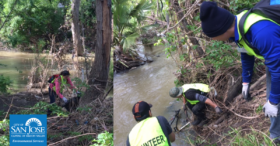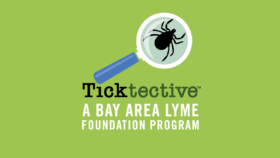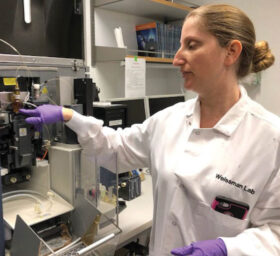FOR IMMEDIATE RELEASE
Bay Area Lyme Foundation Launches Bay Area Lyme Ventures as First Impact Investment Fund to Support Entrepreneurs and Companies Advancing Lyme Disease Solutions
New venture philanthropy fund announces initial investments and will help guide game-changing Lyme diagnostics and therapeutics to commercialization
PORTOLA VALLEY, Calif., September 4, 2025 — Bay Area Lyme Foundation, a leading sponsor of Lyme disease research in the US, today announced the launch of Bay Area Lyme Ventures (Lyme Ventures), a bold new impact fund that is the first designed to attract and drive investment to promising tick-borne diagnostics and therapeutics nearing commercialization. By bringing together strategic research investments, collaborative partnerships, and patient-focused resources, Lyme Ventures aims to advance innovative diagnostics and therapeutics to fill significant gaps that exist in medical care. Today, the fund announces investments in Aces Diagnostics and LymeAlert, both of which are designed to help people bitten by ticks navigate the complicated process of getting an accurate diagnosis.
“This new chapter expands Bay Area Lyme Foundation’s commitment to accelerating innovative diagnostics and therapeutic breakthroughs, as there is an extreme scarcity of support for entrepreneurs and companies developing accurate solutions for patients and clinicians in tick-borne disease,” said Linda Giampa, who led Bay Area Lyme Foundation for the past 12 years and is now the founder and managing director of Bay Area Lyme Ventures.
Lyme Ventures will complement Bay Area Lyme Foundation’s continued commitment to funding scientific research by advancing promising discoveries into clinical development and, ultimately, through commercialization. To date, Bay Area Lyme Foundation has granted more than $30 million toward research, while Lyme Ventures has a goal of investing $5 million by 2027 into companies working to bring solutions to market. Proceeds from these philanthropic investments will fund research projects at Bay Area Lyme Foundation.







 “I want to leave you with hope. I think we’re going to be unstoppable because I think that these are solvable problems. These are answerable questions. I think that there are already a lot of existing tools in immunology that just need to be brought into the fight, and we can change this.”
“I want to leave you with hope. I think we’re going to be unstoppable because I think that these are solvable problems. These are answerable questions. I think that there are already a lot of existing tools in immunology that just need to be brought into the fight, and we can change this.”  Any respectable pathogen that can establish a persistent infection needs to figure out your immune system to the point that it can evade it. The fact that it has persisted means that it was able to evade your immune clearance. And so, I got to that from a very interesting direction working on immune regulation, trying to understand these brakes on the immune response and how they impact the response to infection. The immune system has the power to kill you and obviously, nobody has any incentive for that to happen. So, there are a lot of mechanisms in place to put brakes on the immune system and reign it in. One of the huge developments in cancer over the last two decades has been reevaluating the question: can we take those brakes off? So in my postdoc, I was studying a particular checkpoint where this was turning into an exciting immuno-oncology target, and I said, ‘I want to look at how this checkpoint is used in infection.’ I realized that this checkpoint was being used to help you survive an acute infection, but created a vulnerability for pathogens to evade immune clearance and establish chronic infection much like it allows cancer cells to evade immune clearance. In an amazing collaboration with Irv Weissman, Balyn Zaro, and Jenifer Coburn we realized that the bacteria that cause Lyme disease manipulate this brake and that’s how I became fascinated with Lyme. But I also became concerned about turning off this brake in cancer patients because I was concerned about what would happen if you used this on cancer patients during an active infection. Indeed, the
Any respectable pathogen that can establish a persistent infection needs to figure out your immune system to the point that it can evade it. The fact that it has persisted means that it was able to evade your immune clearance. And so, I got to that from a very interesting direction working on immune regulation, trying to understand these brakes on the immune response and how they impact the response to infection. The immune system has the power to kill you and obviously, nobody has any incentive for that to happen. So, there are a lot of mechanisms in place to put brakes on the immune system and reign it in. One of the huge developments in cancer over the last two decades has been reevaluating the question: can we take those brakes off? So in my postdoc, I was studying a particular checkpoint where this was turning into an exciting immuno-oncology target, and I said, ‘I want to look at how this checkpoint is used in infection.’ I realized that this checkpoint was being used to help you survive an acute infection, but created a vulnerability for pathogens to evade immune clearance and establish chronic infection much like it allows cancer cells to evade immune clearance. In an amazing collaboration with Irv Weissman, Balyn Zaro, and Jenifer Coburn we realized that the bacteria that cause Lyme disease manipulate this brake and that’s how I became fascinated with Lyme. But I also became concerned about turning off this brake in cancer patients because I was concerned about what would happen if you used this on cancer patients during an active infection. Indeed, the 
 Lyme Disease Biobank established a key partnership with the nonprofit
Lyme Disease Biobank established a key partnership with the nonprofit  “Although it is an emotional and difficult idea for anyone to plan to donate parts of their body to science after they have died, we believe that this decision is an important way for Lyme patients to change the course of Lyme disease research. Having access to tissues from the brain, heart, joints, and central nervous system of Lyme patients allows researchers to prove unequivocally that Lyme is present in tissue and contributes to patient suffering,” explains
“Although it is an emotional and difficult idea for anyone to plan to donate parts of their body to science after they have died, we believe that this decision is an important way for Lyme patients to change the course of Lyme disease research. Having access to tissues from the brain, heart, joints, and central nervous system of Lyme patients allows researchers to prove unequivocally that Lyme is present in tissue and contributes to patient suffering,” explains 
 Sunjya Schweig, MD, founder of the
Sunjya Schweig, MD, founder of the